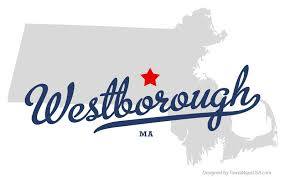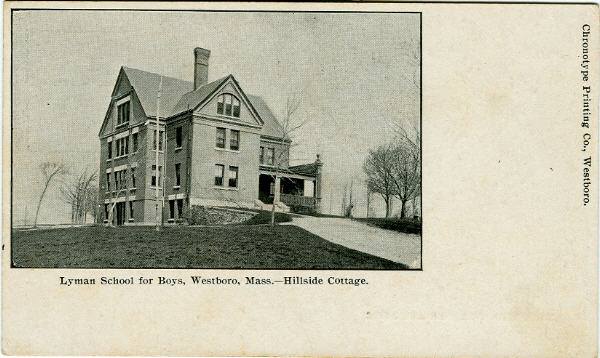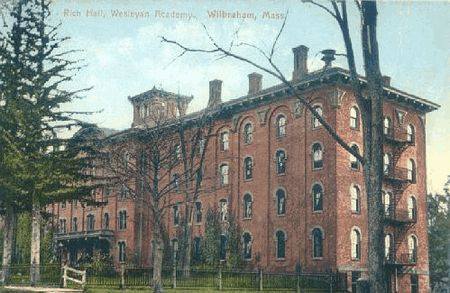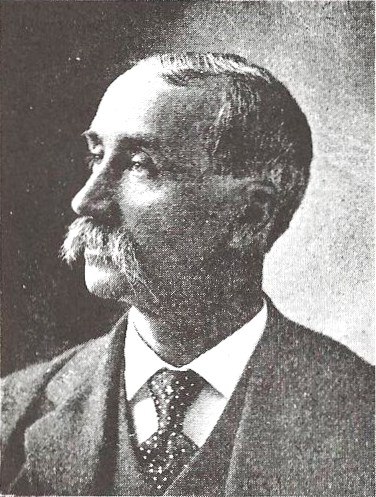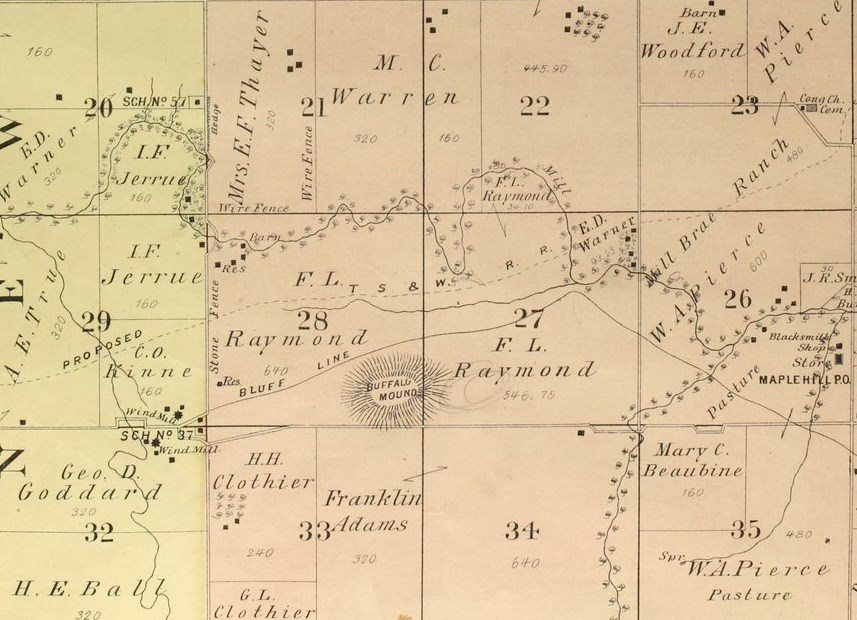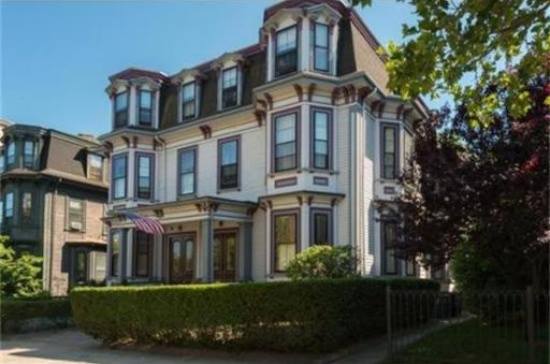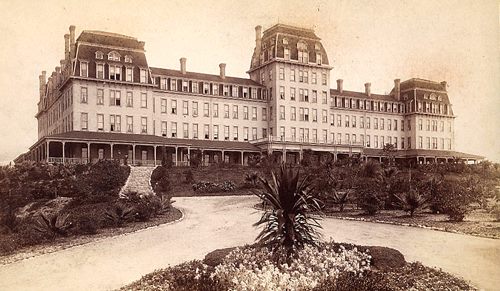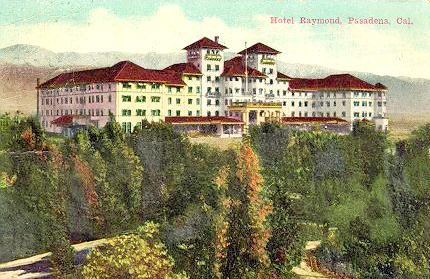#15 The Children of John Hall Parsons Sophia Caroline (Parsons) Raymond
Some of you will doubtless wonder why Im interested in writing these articles. After all, the people I write about are long dead—and in this case—there isn’t a single relative left to enjoy the history. But I feel its important to get what we know on record for future generations—and the real truth—I enjoy it!!
From recorded information on US Census Reports, we know that John Hall Parsons was the father of at least four children with his first wife, Caroline H.W. (Martin) Parsons. The oldest and the youngest girls are thought to have died in their youth, although both lived long enough to be enumerated on a US Census. The oldest was Frances Fannie Parsons, born in 1858. The youngest was Emmeline “Emma Parsons, born in 1864. I have not been able to find a burial location for either child. Caroline Parsons died in 1867 and is buried in the Methodist Church Cemetery, Taylorville, Christian County, Illinois. Since all of the Parsons burials in the Taylorville Cemetery are marked, I think it unlikely that these two girls died there. The two surviving daughters were Sophia Caroline Parsons, born March 8, 1860 at Taylorville, Illinois and Elizabeth M. Parsons, born February 18, 1862 at Taylorville, Illinois.
John H. Parsons married a second time to Phebia E. Crist at Christian County, Illinois on May 9, 1869. They were the parents of a daughter, Catherine Grace Parsons, born April 1, 1870 at Taylorville, Christian County, Illinois. This was just shortly before the family, including his daughters from his first marriage, moved west to Colorado.
John Parsons third marriage occurred about 1875, to a lady named Mary, but her maiden name is not known at this time. Mary Parsons is recorded on two US Census reports, but I have not been able to find a death date or burial location for Mary Parsons.
The oldest child, Sophia Caroline Parsons, made the trip from Taylorville, Illinois to Colorado with her father and stepmother and her sisters Elizabeth and Catherine, who was known as Kate or Katie. Sophia Caroline was known by her first name, Sophia. John Parsons attempted to farm in Colorado but according to his grandson, Warner Adams, he was not accustomed to dry land farming and the venture was not successful. He then returned to Kansas, where he settled on a farm near Overbrook, Kansas. He had seen the farm on his trip to Colorado, which was partially made via the Old Santa Fe Trail, and he thought this would be a more productive farm. His second wife Phebia (Crist) Parsons is thought to have died while living on the farm near Overbrook, KS but I have not been able to find a burial location there. I have checked cemeteries nearby, but have also not found burials for Francis Fanny or Emmeline Emma Parsons. This would have occurred before 1875, because John Parsons married his third wife in 1875, in Wabaunsee County, Kansas.
Warner Adams thought that John Parsons moved his family to their Wabaunsee County farm before 1875, but I have not checked land records to determine an exact date of purchase. The farm consisted of 80 acres of land in the southeast corner of Newbury Township on Spring Creek. The farms landscape was that of gently rolling hills and there was a fast-running spring which is where John Parsons built a house, barn and spring house. When I last visited the farm in the 1970s, the spring was still producing good quantities of water and continued to furnish water for the house and barn—good, cold spring water.
John Parsons was already near 60-years-old when he settled on the Wabaunsee County farm, but he planted a good-sized orchard and broke some of the native grassland to plant row crops. He had a small house built, which was later enlarged to its present size by his daughter Catherine and her husband Fred Gray.
As weve mentioned earlier, John Hall Parsons health declined and he moved to Florida about 1890. The 1890 US Census was burned in a tragic fire in Washington, DC and does not survive, so we dont know if his wife Mary was still living or not. He died before the 1895 Census was taken, so that also provides no further help.
There is a small notice of his death in the Wabaunsee Signal:
February 15, 1895 Mr. John H. Parsons, one of the oldest citizens of Wabaunsee County, died Tuesday at the home of his son-in-law, Frederick Raymond. Mr. Parsons had congestive chills. He had $3,000 insurance in the Masonic Mutual Benefit Association. Mr. Parsons was the father-in-law of Hon. Frederick Raymond and Franklin Adams of Maple Hill, and until recently had lived in Florida.
The 1895 Kansas Census does not include a Mary Parsons, widow, either on the home farm or in the Raymond or Adams households.
The oldest surviving daughter of John Hall Parsons was Sophia Caroline Parsons, born at Taylorville, Illinois on March 8, 1860. She was known by the family as Sophie or Sophia. She attended one-room schools in Wabaunsee County and passed the test required to teach in one-room schools. She was teaching at the Vera School when she met her husband, Frederick L. Raymond. They were married at the Parsons home October 10, 1878 by Rev. G. L. Nicholson.
Frederick Raymond was an early resident of Maple Hill Township, arriving from Worchester County, Massachusetts in October 1874. He was known as Fred, and was an important figure in Wabaunsee County history throughout his life. He chose the Mill Creek Valley for his home, after Boston friends of his family made a visit to the area and decided to set up their sons as gentlemen farmers. Among those were also the families of Alden Speare and William A. Pierce. They bought lands that were granted from the old Pottawatomie Indian Reservation to the Atchison, Topeka and Santa Fe Railroad. The Speare Farm was west of Raymonds in the Mill Creek Valley and the Pierce Ranch The Mill Brae Ranch was adjacent and East of Raymonds. Fred Raymonds 1,200 acres included Buffalo Mound and the Mill Creek Valley land below it to the south.
Fred Raymond came from an old and distinguished family in New England. I would like to provide a portion of that history, which was taken from the obituary of his fathers brother, Emmons Raymond in the Cambridge Tribune: August 20, 1892
Death of Emmons Raymond
Mr. Emmons Raymond, a prominent and successful railroad man, died at his home, 389 Broadway, this city, Thursday morning, at the advanced age of 86 years. Mr. Raymond was troubled with a stomach complaint for several months past, but was able to attend to business until three or four weeks ago, when became worse and was confined to his home.
He was born in Shutsbury, Massachusetts, September 13, 1806 and was the son of Asa and Huldah Raymond, whose diamond wedding is the only one on record in this State, they living together seventy-five years and six months, dying at the ages of 97 and 96 years. In November of 1822, Emmons Raymond came to Boston and entered the employ of his brother, Edward A. Raymond, who was then a merchant of West India goods on Elm Street. Six years later, he entered into partnership in the same business with his brothers, Edward A., and Zebina L. and was located on South Market Street and under Faneuil Hall until 1858, when that building was given over to city market purposes. It was in this year he retired from the business to which he had so long been devoted and became interested in railroad affairs. His future career from thence on shows his close connection with and activity in railroading.
When the Concord Railroad was organized, he became one of its directors, and continued as such for a number of years. In 1850, he was chosen a director in the Connecticut and Passumpsic Rivers Railroad, continuing so until his death, being president of that company from 1870 until 1887. He was one of the forty original subscribers to the stock of the Atchison Topeka and Santa Fe Railroad, which company he helped Col. Holliday organize. He was the principal force behind many Boston investors in the company. He was also on the board of directors of AT&SF from February 1869 until May 1873. By his death, the presidency of the Newport and Richford Railroad becomes vacant, a position which he has held for the past twelve years, being connected with the railroad since its beginning. At the time of his resignation from the Passumpsic River Railroad, it was said of him: Mr. Emmons Raymond, for sixteen years president of the Passumpsic River Railroad, has resigned his position. For nearly thirty years, he has been connected with this railroad and his associates in the management of the road will cheerfully bear testimony to the fact that the success of the railroad has been largely brought about by his indefatigable services. If he had owned every dollar of the stock, he could not have labored with greater zeal or have been more mindful of its interests. There is no department of the corporation with which he is not familiar and there is not a mile of railroad that he has not personally inspected, travelling on foot to look after its condition, Mr. Raymond will on the 13th instant complete his eightieth birthday. Age has not impaired his intellect or stiffened a joint in his frame. No man in New England has done more hard work than he and yet he enters now upon a new field of enterprise with all the courage and push of a young man. It is well known that Mr. Raymond, with his son, has recently erected at South Pasadena, Los Angeles County, California the finest hotel on the Pacific Coast, which will be opened this fall. His investment of several hundred thousand dollars in this enterprise will require his attention, and for this reason he retires from the Passumpsic Railroad.
Mr. Raymond was one of the original organizers and directors of the Massawippi Valley Railroad, being a director at the time of his death. It was he who formed the company which built the Profile and Francoma Notch Railroad and was the first President, chosen to preside over its destinies. He held the office from 1881 to 1886. He built the Raymond Hotel at East Pasadena, California in 1886 and in many towns situated along the Passumpsic Road, he was interested in and built water works as well as various businesses. He built the water works for the town of Newport, Vermont. Mr. Raymond married Mehitable C. Monroe of Boston on June 4, 1833 an she survives him. He also leaves five children: Henry E., Thomas C., Charles A., Walter, and a daughter Mrs. Mary J. Cook, wife of Rev. Henry A Cook of Cambridge. Mr. Raymond lived on McLean Street, Boston, until 1863 when he moved to the fine mansion on Broadway, this city, which has since been his home. The funeral will take place this afternoon at 2:00pm. Interment will be in Mount Auburn Cemetery.
Frederick L. Raymonds father, Willard Raymond, and brother of Charles Emmons Raymond, did not participate in the familys mercantile and railroading heritage but rather owned and operated a large horse breeding farm at Westborough, Massachusetts. According to the 1850 US Census, his farm had a cash value of $11,000 and his personal property $4,500. This was not a small New England farm but the holdings of a wealthy gentleman.
Frederick Raymonds father died in 1856 when Fred was only five years old. Undoubtedly, his uncles wealthy and powerful Boston merchants and businessmen, had a great deal to do with his upbringing. We know that Fred attended an academy for wealthy children and then two different institutions of higher learning. His mother remained on the farm after his fathers death, and his older brother, George Henry Raymond, was responsible for continuing its operation. All of Freds brothers joined family firms or set out to make successful merchants and lumbermen in Chicago and Michigan. The entire family is rather remarkable.
Frederick L. Raymond bought 1,200 acres of land in the Mill Creek Valley including Buffalo Mound. His acreage was all located on the south side of Mill Creek. One section of this land was AT&SF Railroad Land, the other Public Land resulting from the diminished Potawatomi Indian Reservation. Since his Uncle Charles Emmons Raymond was on the AT&SF Railroad board, it is likely that he influenced Raymond and may have obtained some special privilege in purchase price. The public reservation land was unbroken and therefore likely sold for $1.25 to $1.50 per acre.
A cousin of mine, Tom Shipp, who married Eveline Jones, was one of the first foremen on the Raymond Farm/Ranch. His son, Francis Marion Frank Shipp was raised in a little house dug into the side of Buffalo Mound, which Raymond himself had lived in while building his frame dwelling. Frank Shipp was born there in 1879, just five years after Raymond arrived. I interviewed him when he was in his 80s and he told me about having a perfect vantage point for watching the building of the Rock Island and Pacific Railroad through the valley in 1886-87.
He also said that Raymond moved a steam-powered saw mill onto his property and sawed much of the lumber for his own dwellings and that of surrounding farms. There was mention of his sawmill in an 1875 Maple Hill News Item in the Alma Signal: December 18 Maple Hill has two saw mills in full blast. They are the one of Mr. F. L. Raymonds farm near Buffalo Mound, and the one in the horseshoe bend of the Kaw, just above Willmetts Ferry operated by Jacob Mulvane. Lumber may be bought at from .12 to .16 cents per thousand feet.
This article appeared in the 1879 Maple Hill News Items: May 14 Mr. Frederick L. Raymond has erected the largest barn in Wabaunsee County of stone and wood. It is 30 x 100 with a basement under it. The aisle is 12 wide. There is room for two wagons in the aisle abreast. Mr. Raymond brought in the finest technicians from Kansas City to build the barn. This barn and Fred Raymonds original home are no longer standing, but I have photographs of both.
Fred Raymond had not only graduated from the finest elementary and secondary school available in Massachusetts and had also finished two years of training at an agricultural college, so he wanted to employ the most modern techniques available on his farm and ranch.
When Raymond died, in January 1925, an extensive obituary appeared in the Alma Signal Enterprise on January 15, 1925:
The death of Frederick L. Raymond, at his winter home in Emporia, Kansas, on Friday, marks the passing of a Wabaunsee County historical figure.
Mr. Raymond was born August 11, 1851 on his parents farm at Westborough, Massachusetts after attending town schools and high school, he spent two years at Wesleyan Academy and Wilbraham, Massachusetts, where his professor was Dr. Isaac Goodnow, founder of Kansas State Agricultural College.
Coming West, he first settled 11 miles northeast of Colorado Springs, Colorado where he tried sheep ranching but his land was new and many miles from a railroad and the romance of such a life soon wore off. Having a chance to sell out, he drifted to Kansas, through the Mill Creek Valley, where his friend William A Pierce had established a ranch, and soon located in Maple Hill Township, where he has since resided, with the exception of the time spent at his winter home in Emporia.
When the Rock Island built through his farm, he was instrumental in obtaining a flag station and post office, that was named Vera. Mr. Raymond was elected Wabaunsee County Representative on the Republican ticket in 1880 and Representative to the State Legislature in 1884. He was a capable and popular public official.
Mr. Raymond was twice married, his first wife being Sophia Parsons, who died in the 1880s, leaving two sons, Frederick Raymond, Jr. now living in San Francisco, California and William Raymond of Iowa. His present wife, formerly Florence Dickinson, survives the deceased. To this union, a son, Charles Raymond was born. He grew to manhood in the Mill Creek Valley and joined the US Army and became an aviator at Ft. Sill, Oklahoma. He died suddenly of the Spanish Influenza in 1918 and is buried in the Maple Hill Cemetery.
Ms. Ed Finney and son Edgar of Ft. Cobb, OK and Newton Dickinson of Verdum, OK accompanied the body from Emporia home to Maple Hill. Mrs. Frank Milleken, Mr. and Mrs. Otto True, Mr. an Mrs. Robert Steele and daughter Marian, all of Topeka, attended the funeral services.
The funeral was held at the Maple Hill Community Congregational Church. Mr. Raymond was very active in the Eliot Congregational Church (The Old Stone Church) and in the Maple Hill Church, serving in on many boards and committees. The service was in charge of Rev. J. B. Gonzales of Topeka, a personal friend of the deceased, who is now Superintendent of the Kansas Congregational Conference. The body was laid to rest in the quiet and beautiful cemetery above the Old Stone Church at 2:30pm. Miss Otillie Schmitz came from Alma and sang three beautiful songs.
Two sons survived Frederick and Sophia (Parsons) Ramond Willard Raymond, was born November 21, 1879 at the Raymond home. He attended Vera School and Kansas State Agricultural College and later went to work as a railroad brakeman, working for several lines. He began his career while living in Emporia, Kansas where he helped look after his father. After his fathers death, he lived in several Iowa communities, where he continued to work for the railroad. He returned to Maple Hill, living in his family home, until his death in 1950. He is buried with his parents in the Old Stone Church Cemetery, Maple Hill. Willard was named for his paternal grandfather, Willard Raymond, of Westborough, Massachusetts. He never married.
The second son was Frederick Parsons Raymond, who was born April 16, 1884 at the Raymond home. He also attended Vera School and Kansas State Agricultural College. Fred Raymond, Jr. went to California to work for his paternal uncle, Charles Raymond, who had constructed The Raymond Hotel, at Pasadena, California. This was the first of two massive structures built, the first hotel having been destroyed by fire in 1905. The second structure, opened in 1907, was mostly the home of weathy Easterners who came for the exceptional climate. It was torn down in 1937. The exact date is not known, but Fred Raymond, Jr. moved to San Francisco, California where he is first recorded there on the US Census in 1930. He worked for Grayline Tours for the remainder of his career, and died there on April 24, 1944. He is buried in Woodlawn Memorial Park, Coloma, California.
He was never married.
The two Raymond brothers continued to own their fathers farm after the death of Frederick and his second wife, Florence (Dickinson) Raymond. Fred Parsons, Jr. died first and left his interest to his brother Willard Raymond, who returned to the farm after his retirement. When he died in 1950, the farm was purchased from the estate by the Imthurn Cattle Company, owned by Elmer and Charlotte Imthurn. The Imthurns had also purchased the old Jerrue property, which eventually through inheritance had come to be owned by the Jerrue daughter, Emerald Jerrue Winkler.
Willard Raymond was buried in the Old Stone Church Cemetery with other members of the Willard family. Sadly, there are no descendants of Frederick Lewis and Caroline Sophia (Parsons) Raymond living. The Imthurn Family continues to own the original farm developed by Frederick L. Raymond, with the exception of the Buffalo Mound pasture of 620 acres, sold by Raymond family members before 1950.
Photo 1 – Map showing location of Westborough, MA.
Photo 2 – Lyman School which Frederick Raymond attended.
Photo 3 – Wesleyan Academy, Wilbraham, MA which Frederick
Raymond attended.
Photo 4 – Frederick L. Raymond, when a Wabaunsee County
Commissioner.
Photo 5 – 1885 Map showing Frederick Raymond’s farm and
pasture of about 1,200 acres.
I am not aware of any surviving photographs of Sophia (Parsons) Raymond or of Fred and Sophia Raymond’s two children, Willard and Fred Raymond.
Photo 6 – Home of Frederick Raymond’s uncle, Charles Emmons Raymond in Cambridge, Massachusetts as it looks today.
Photo 7 – The first Raymond Hotel built in Pasadena, California.
Photo 8 – The second Raymond Hotel, built in Pasadena, CA.
